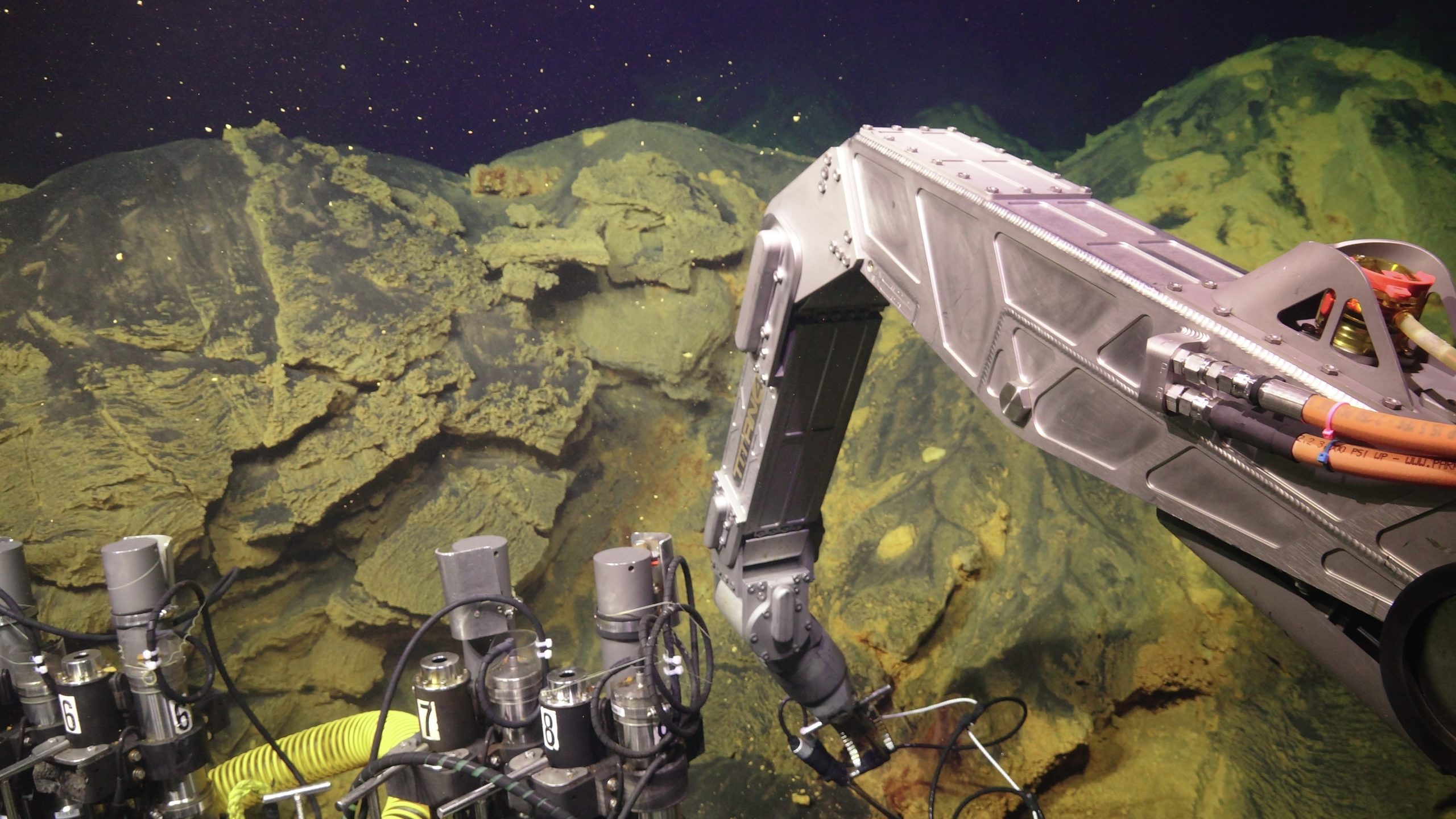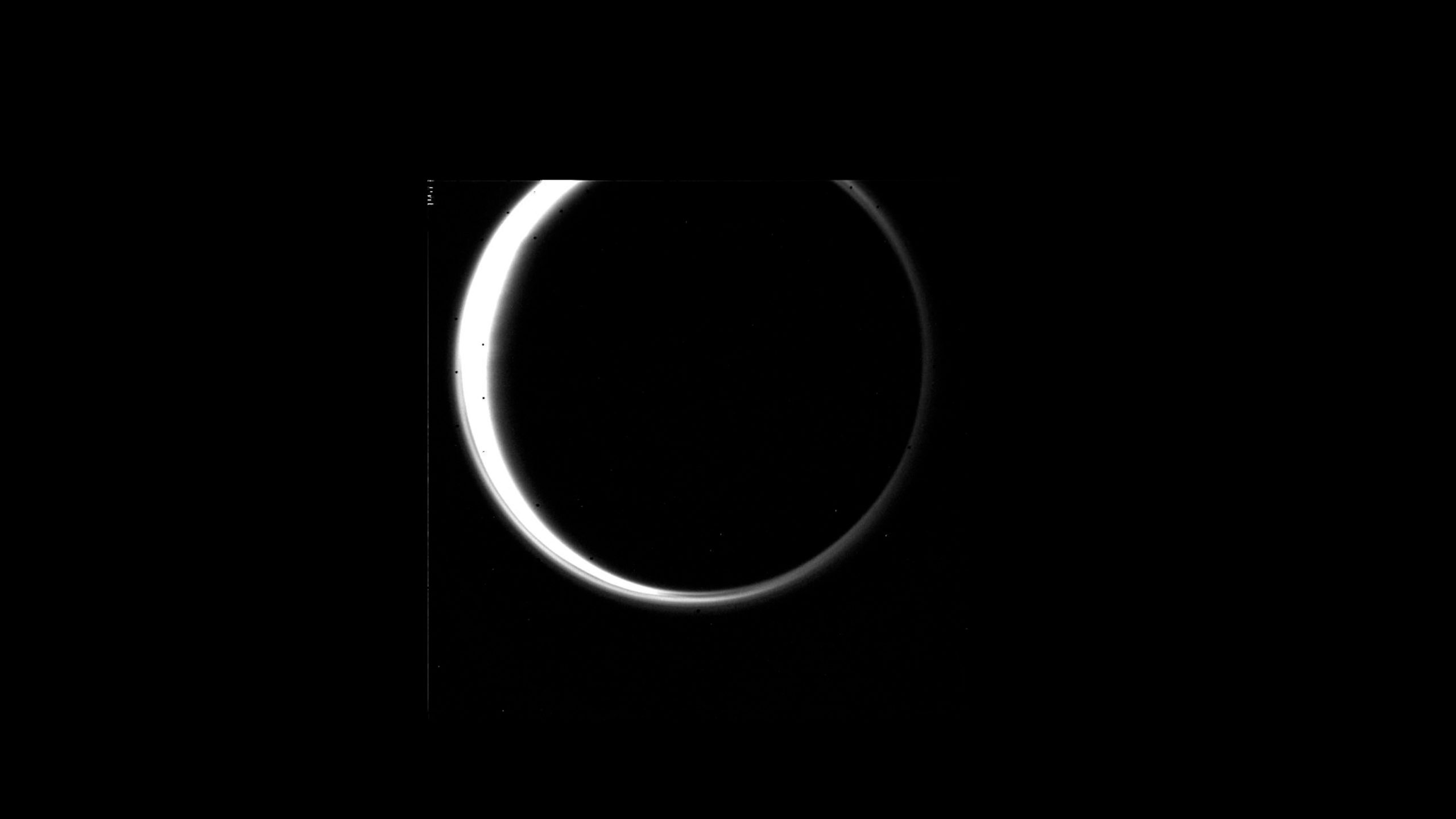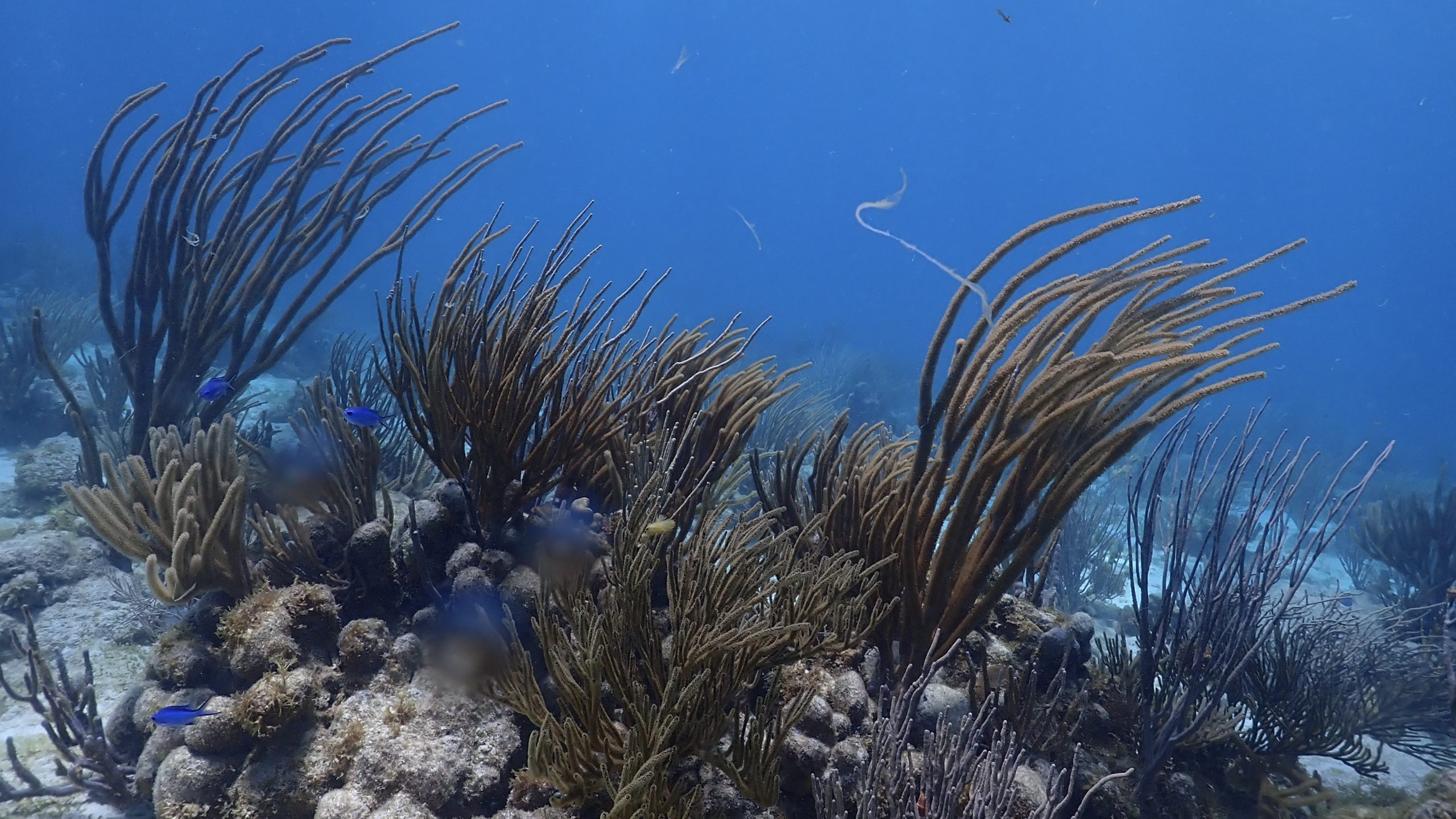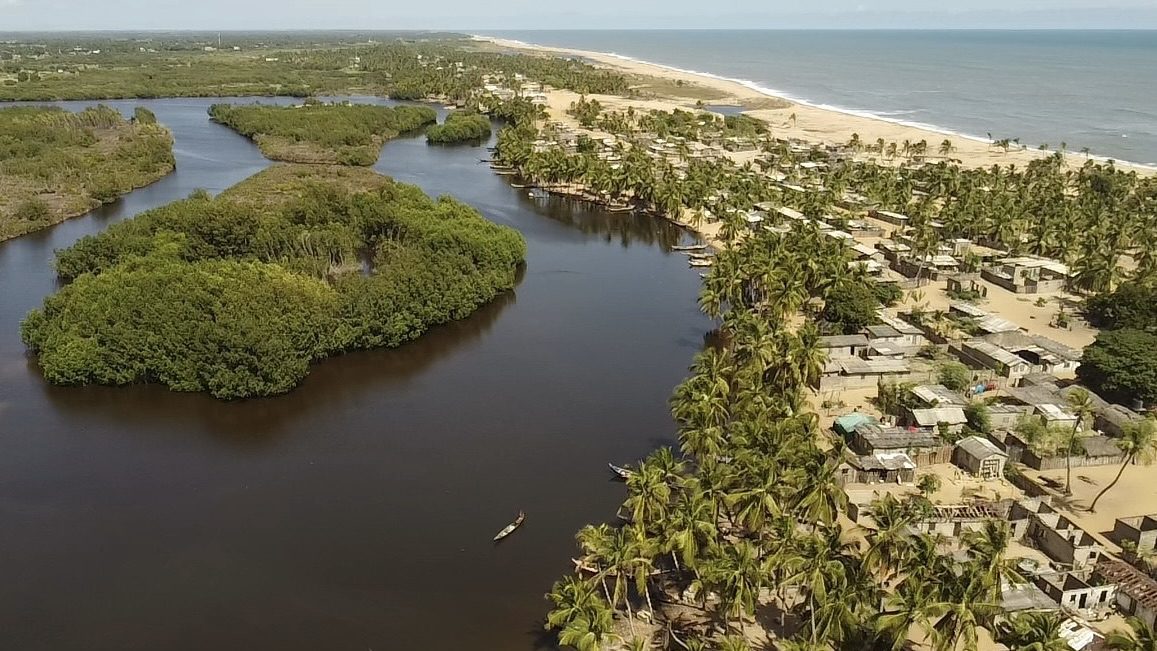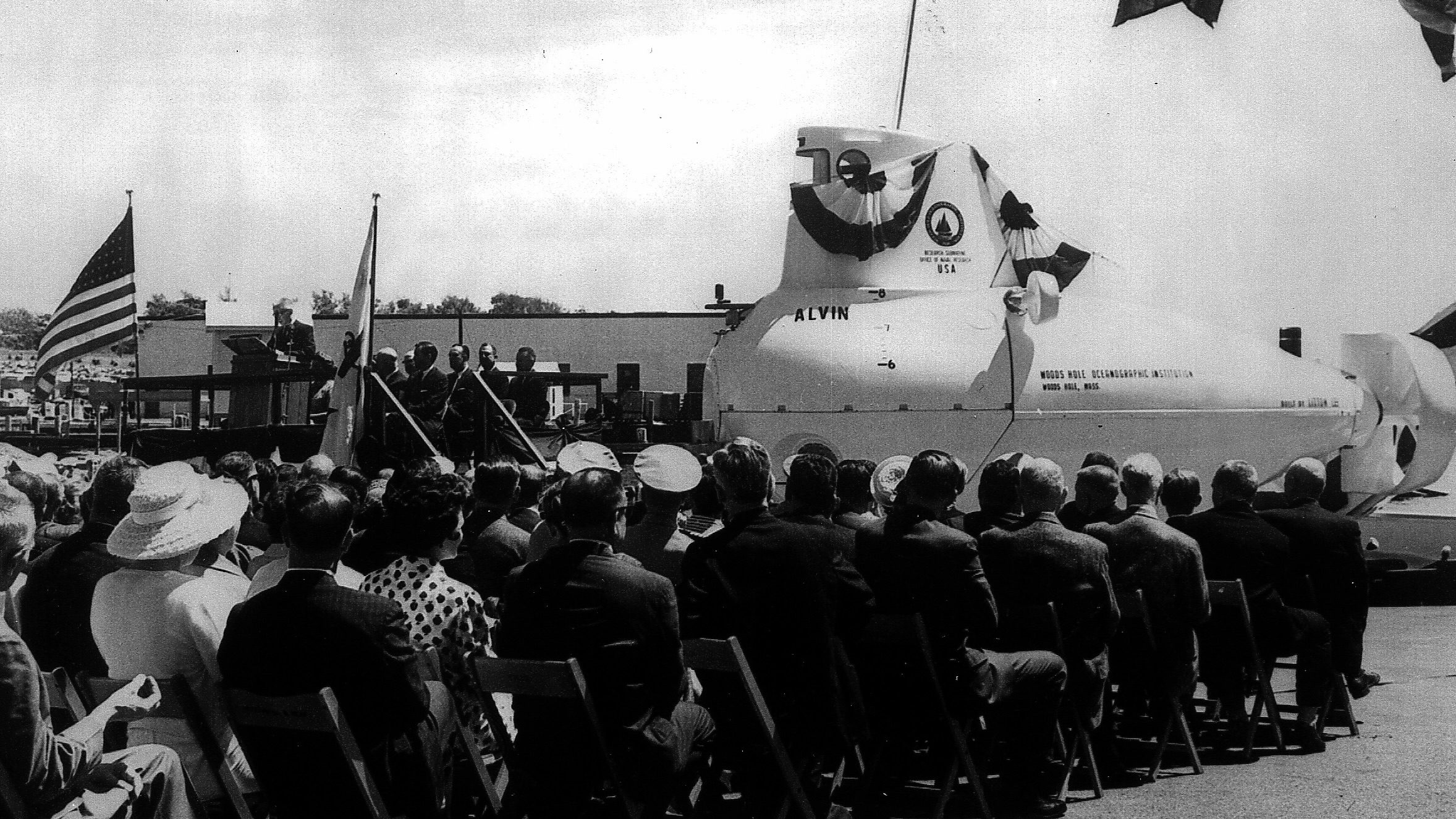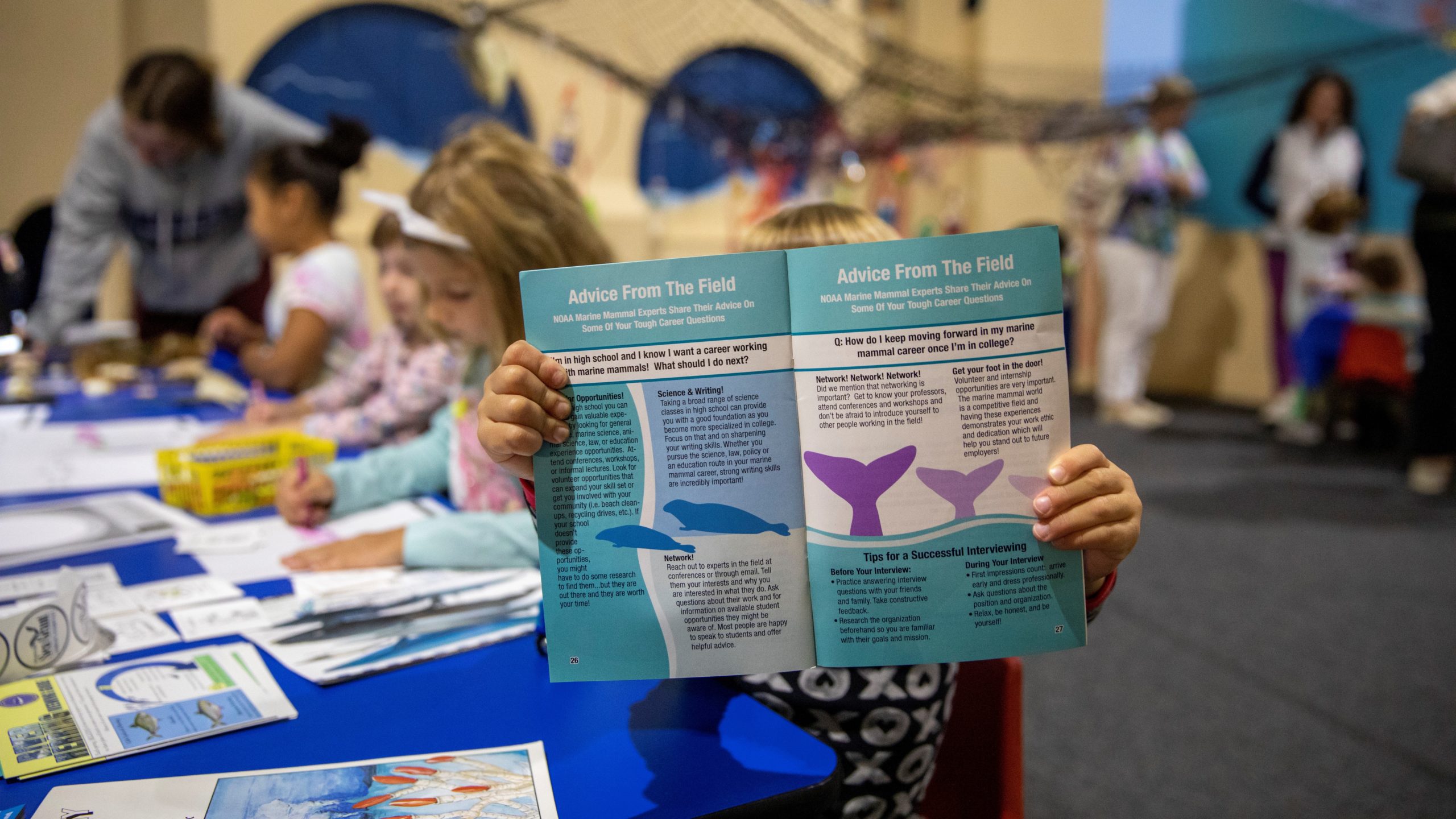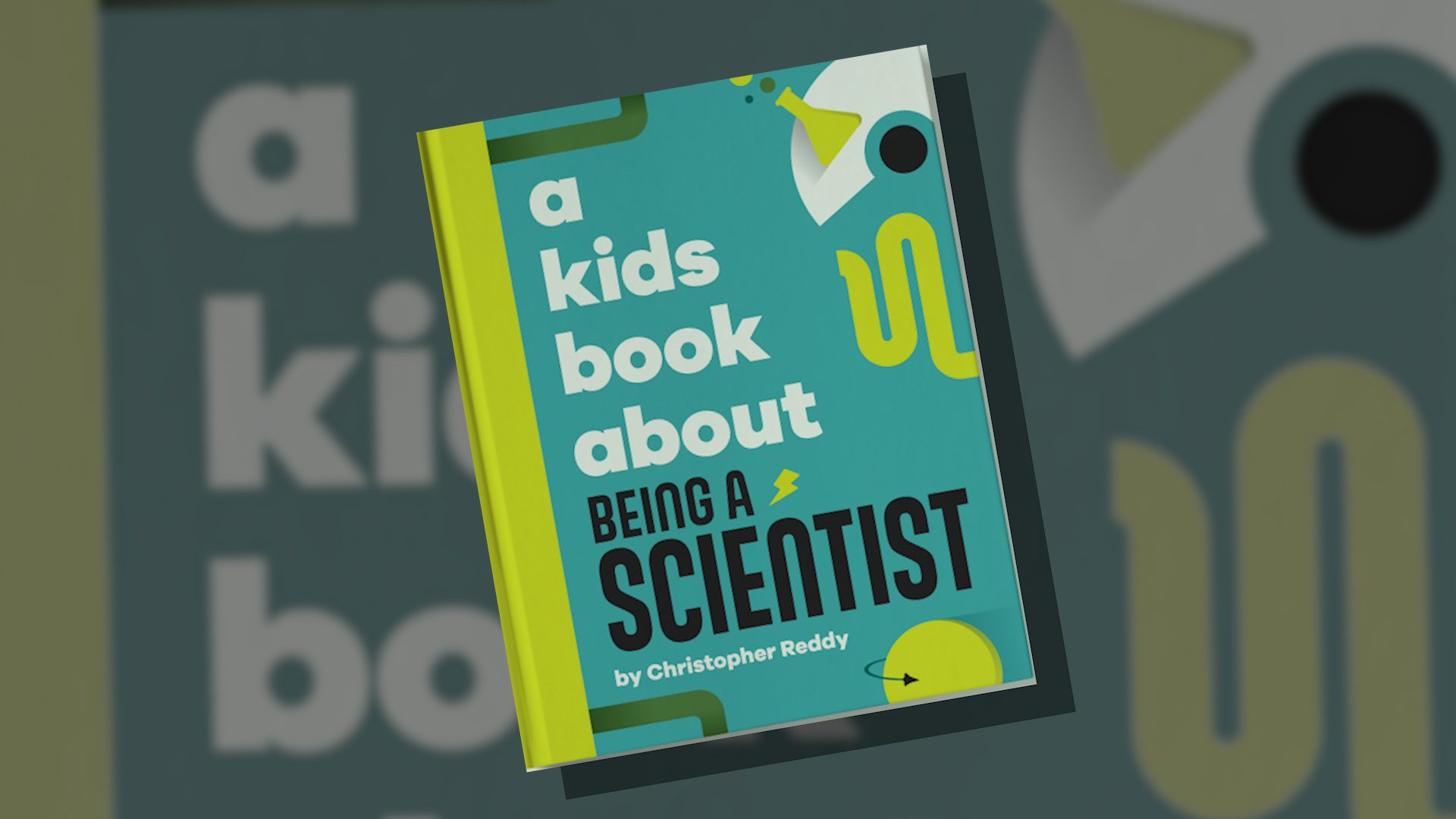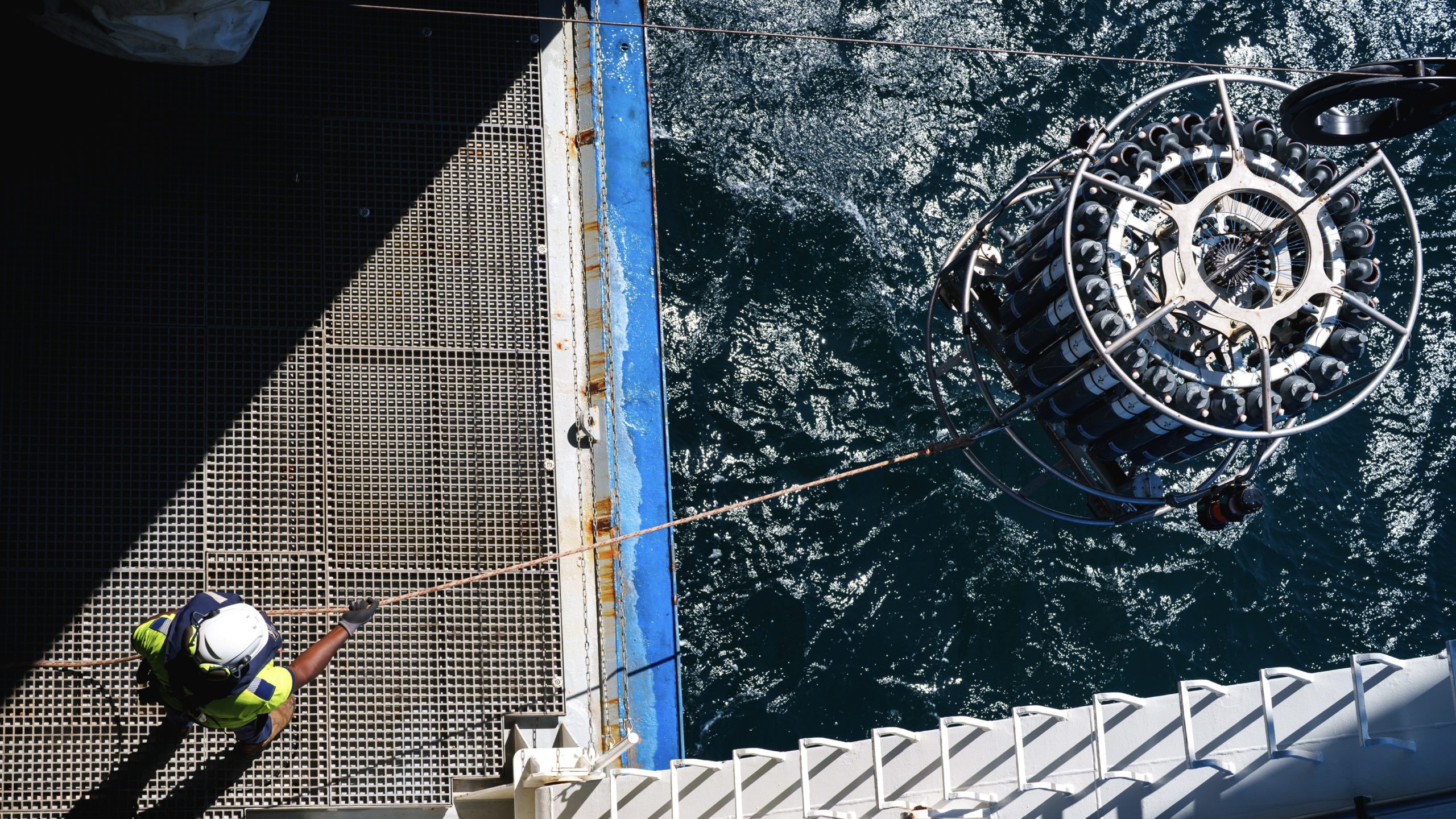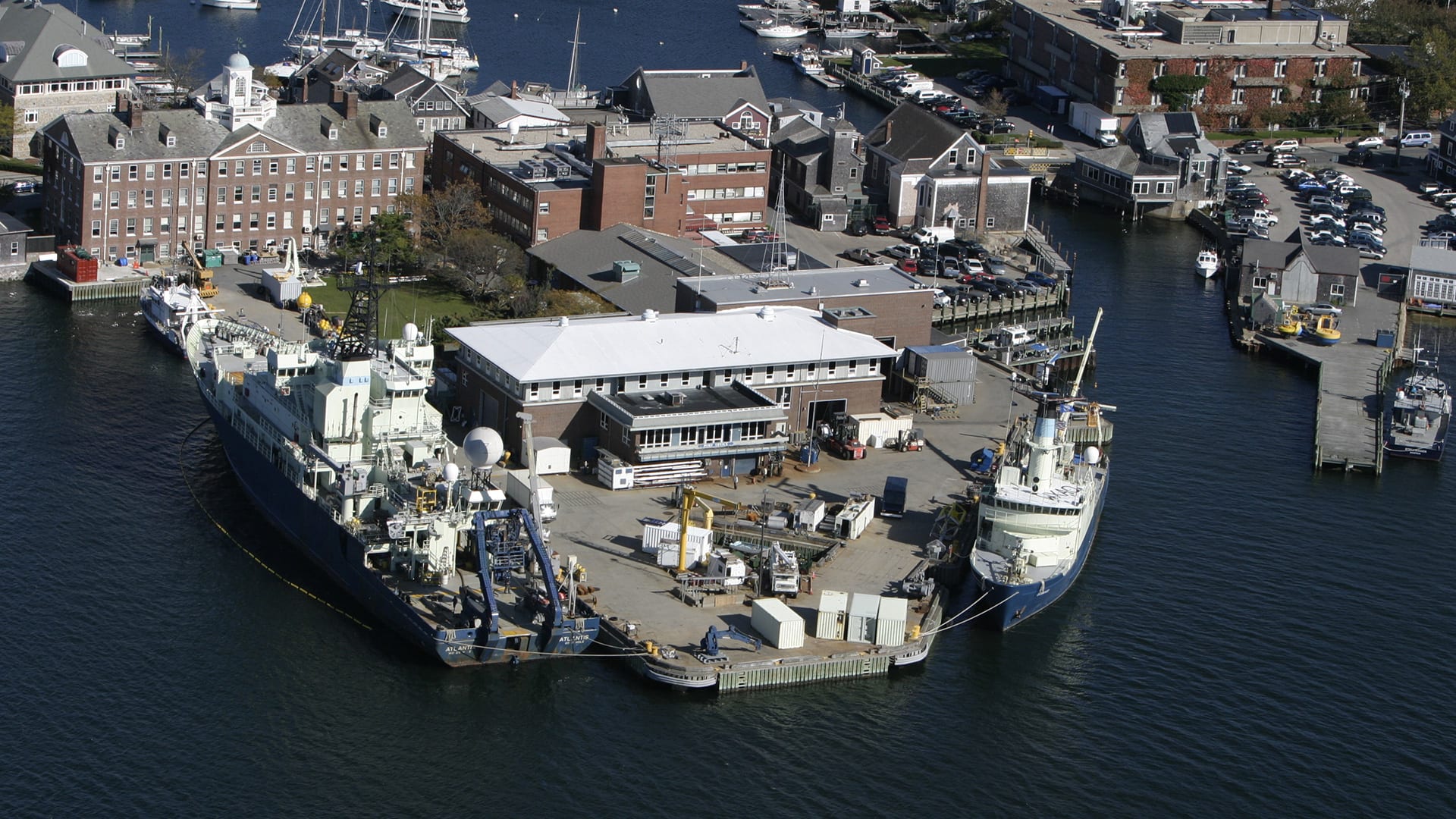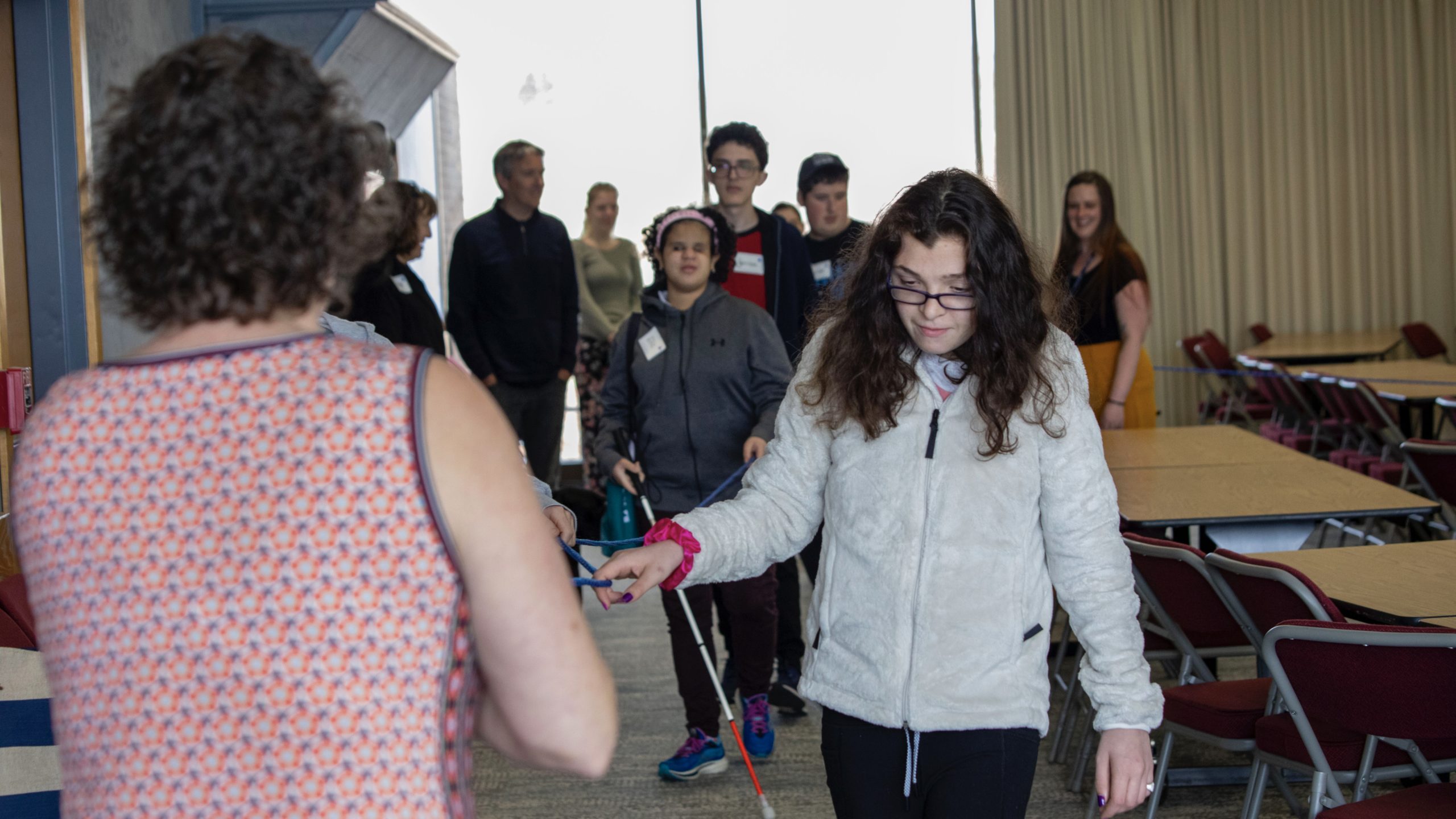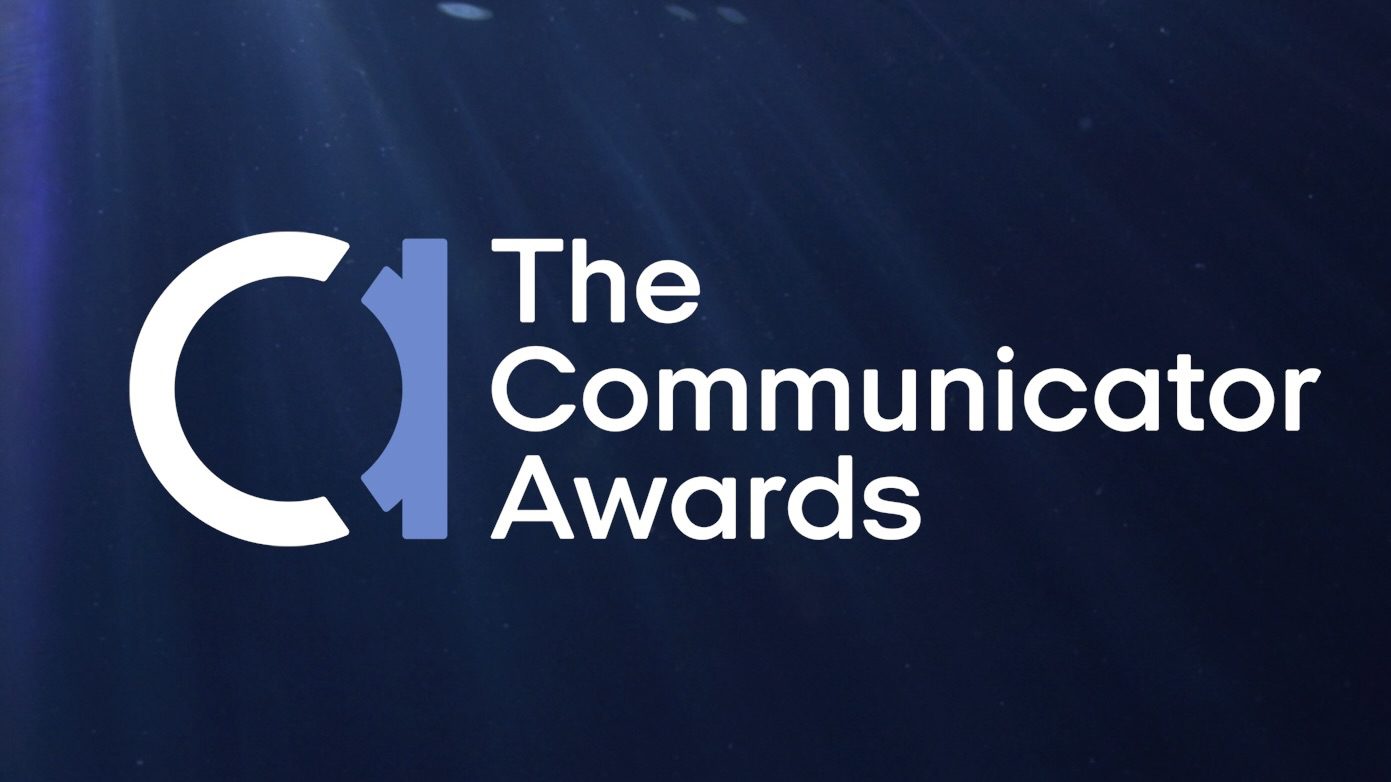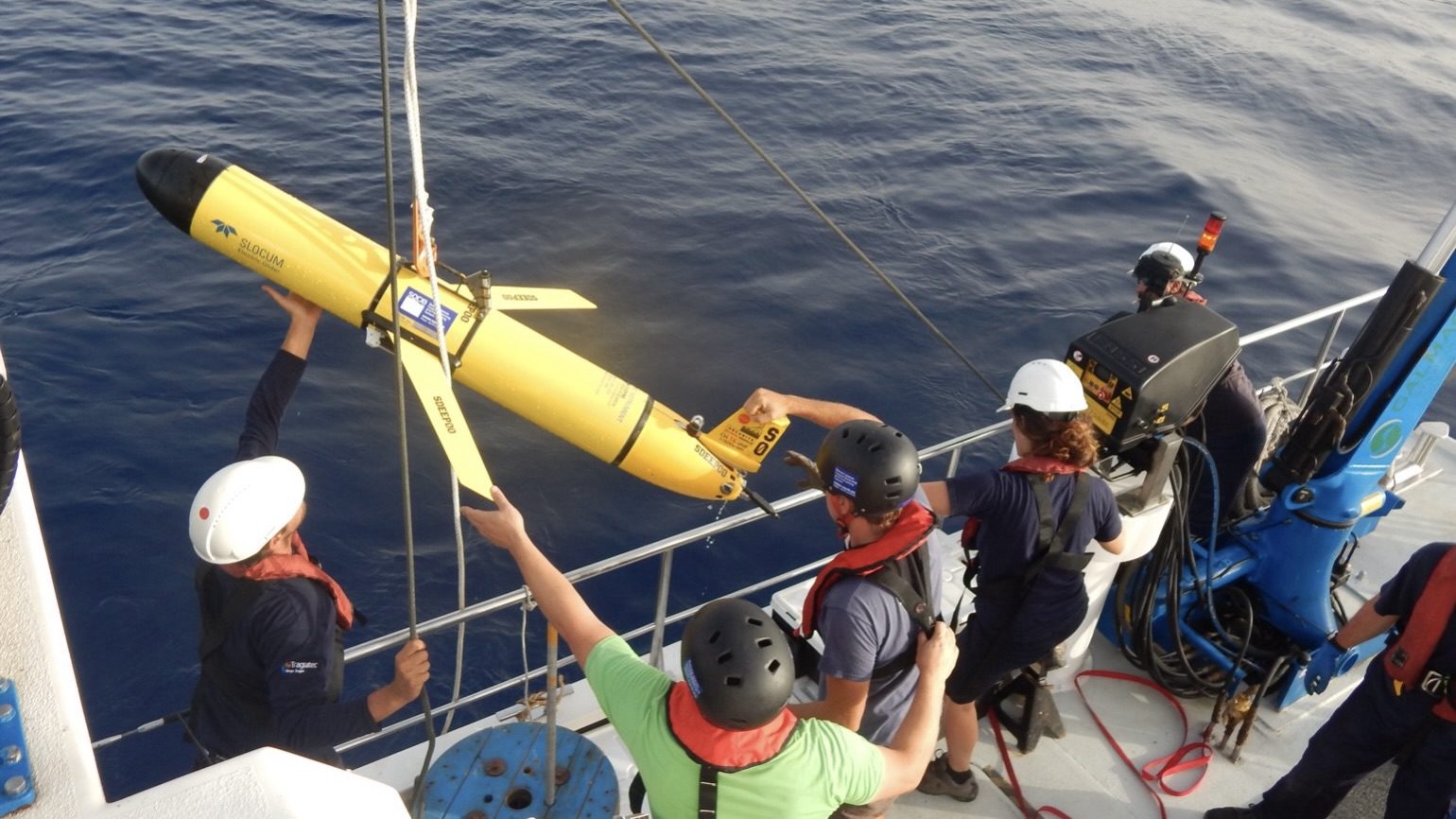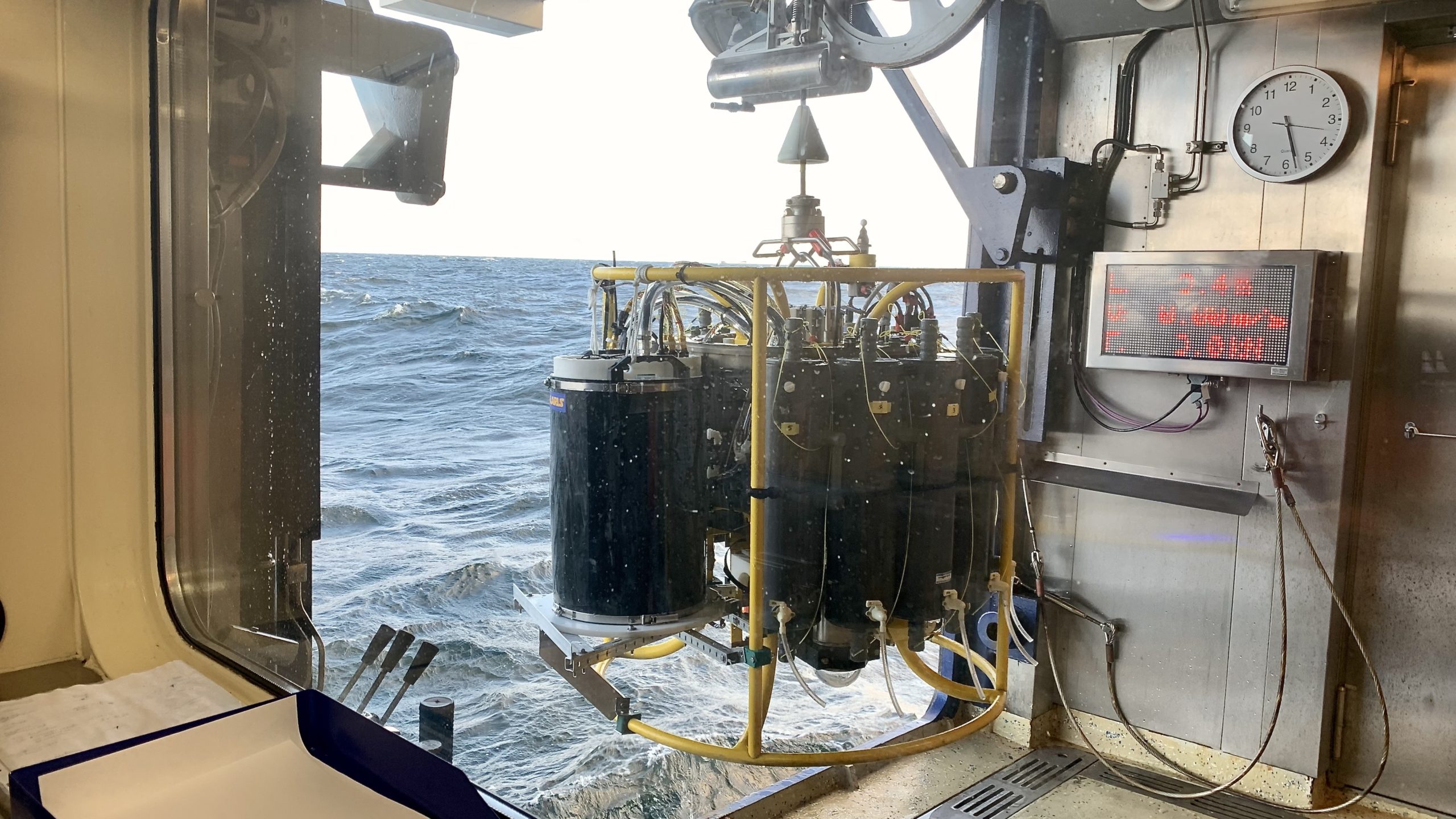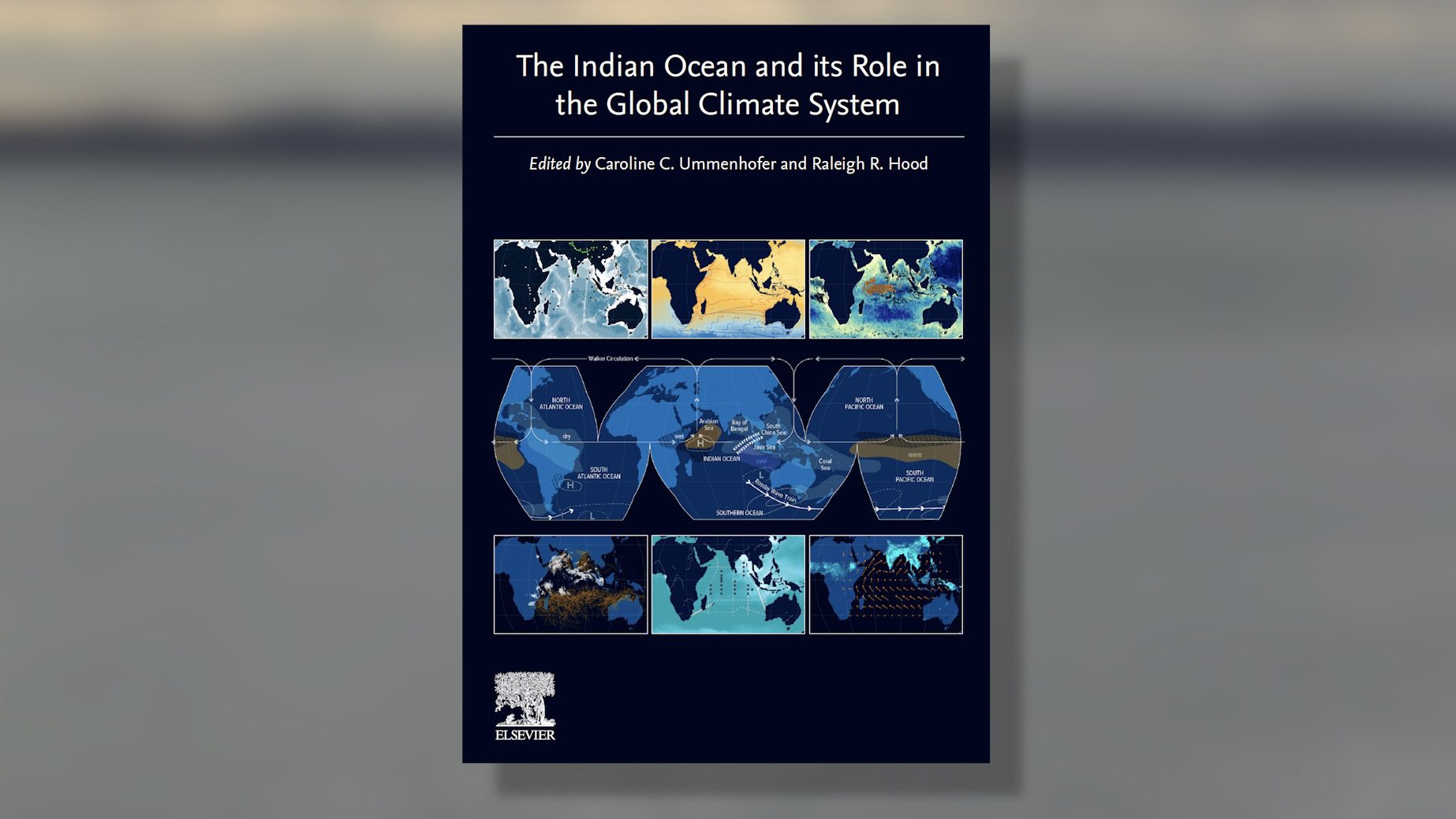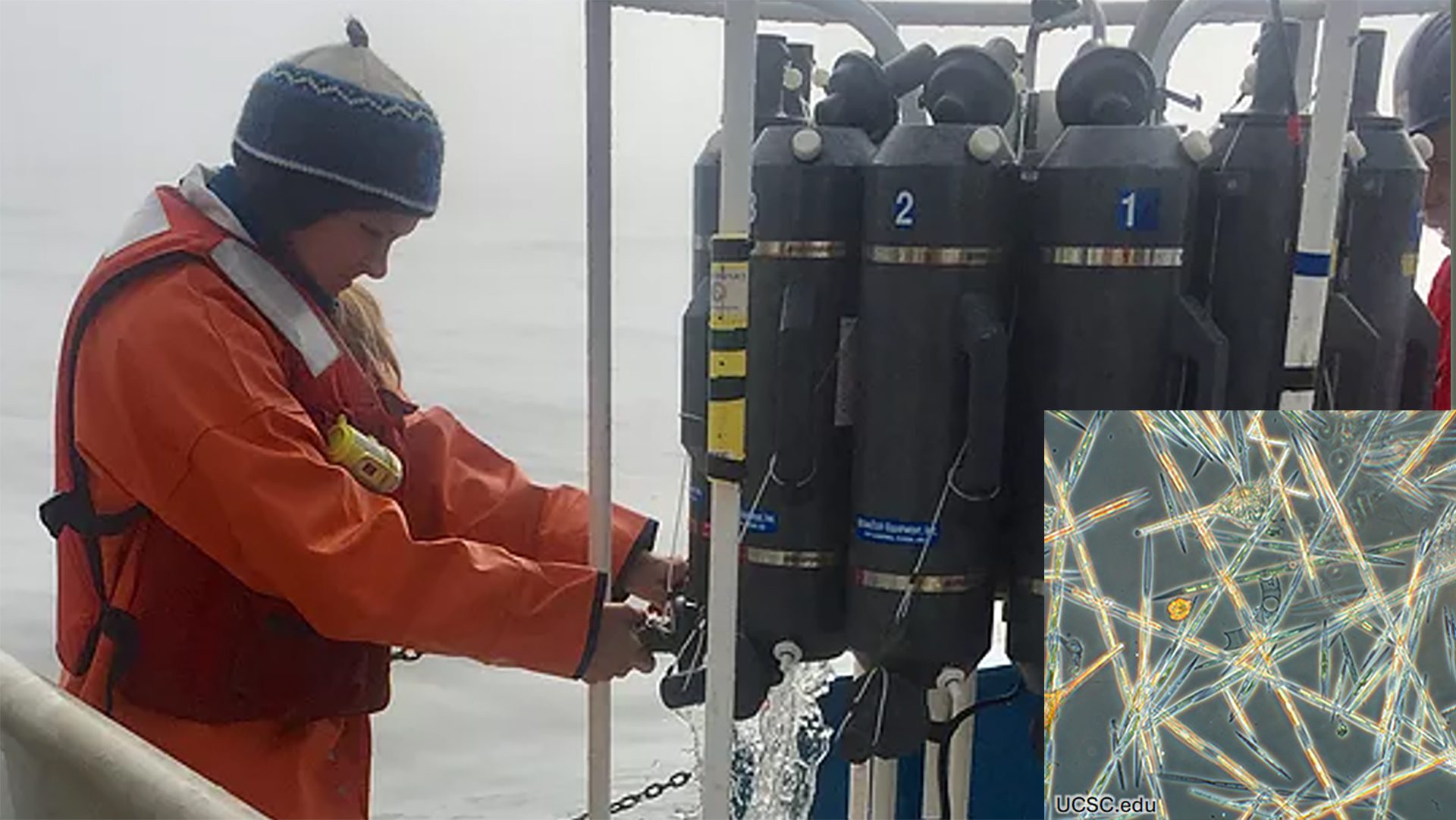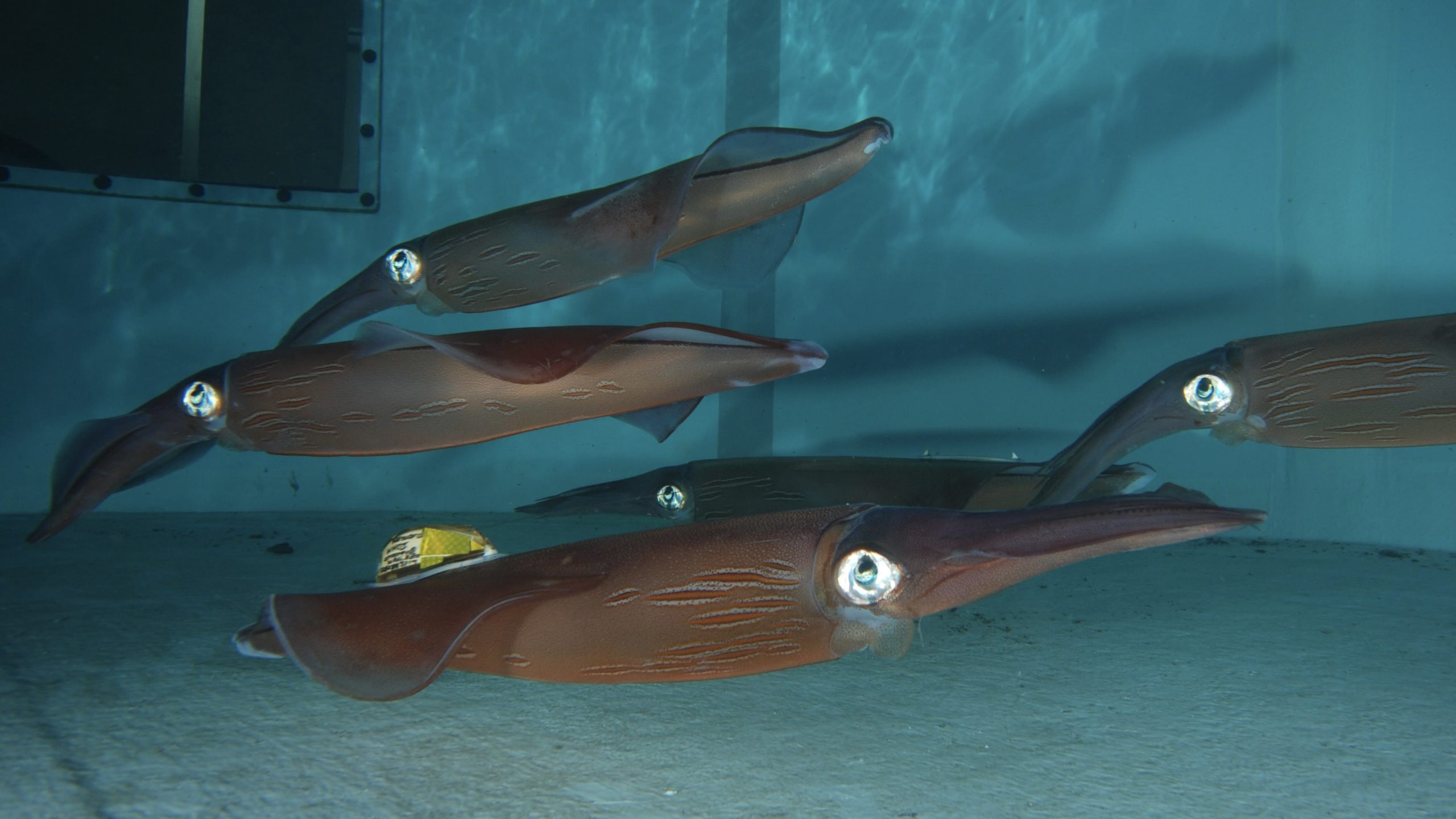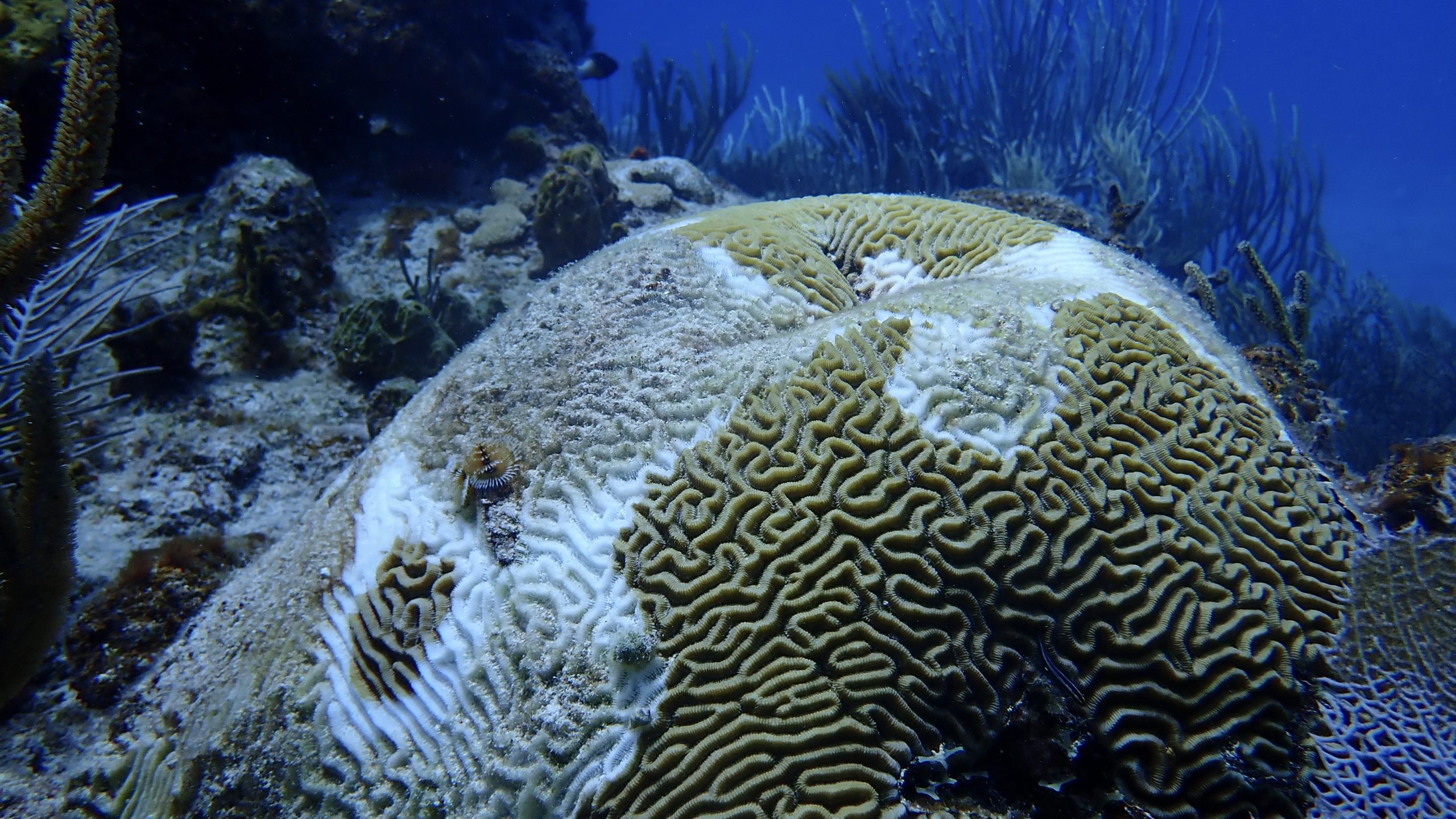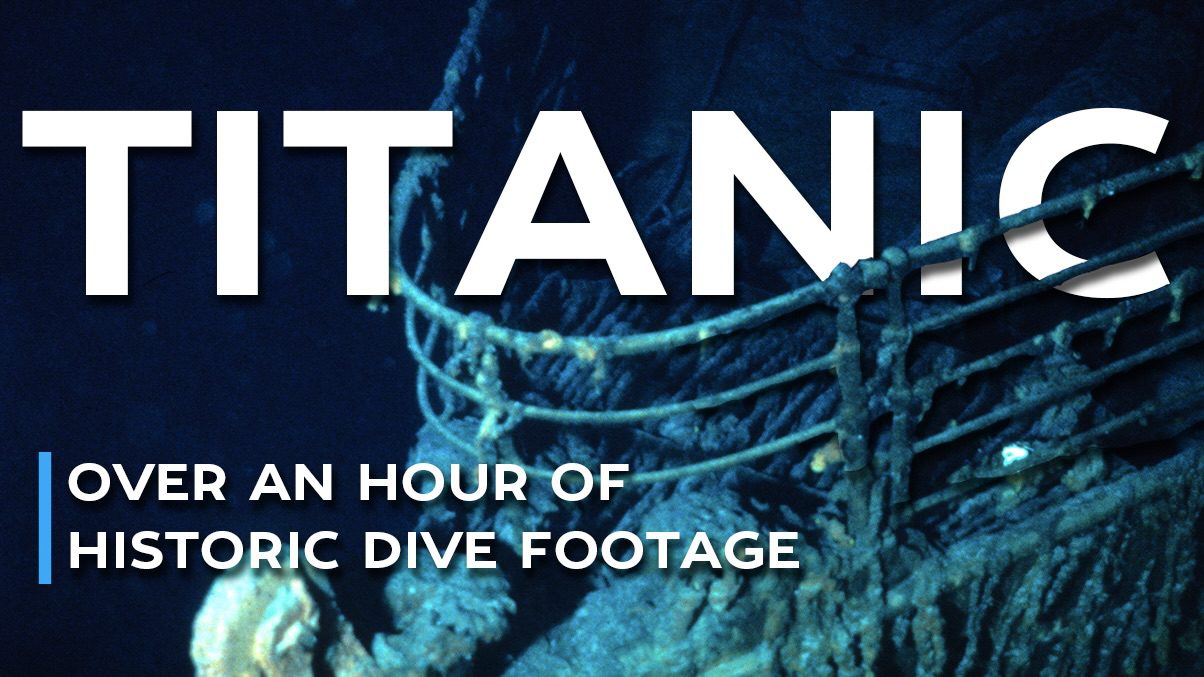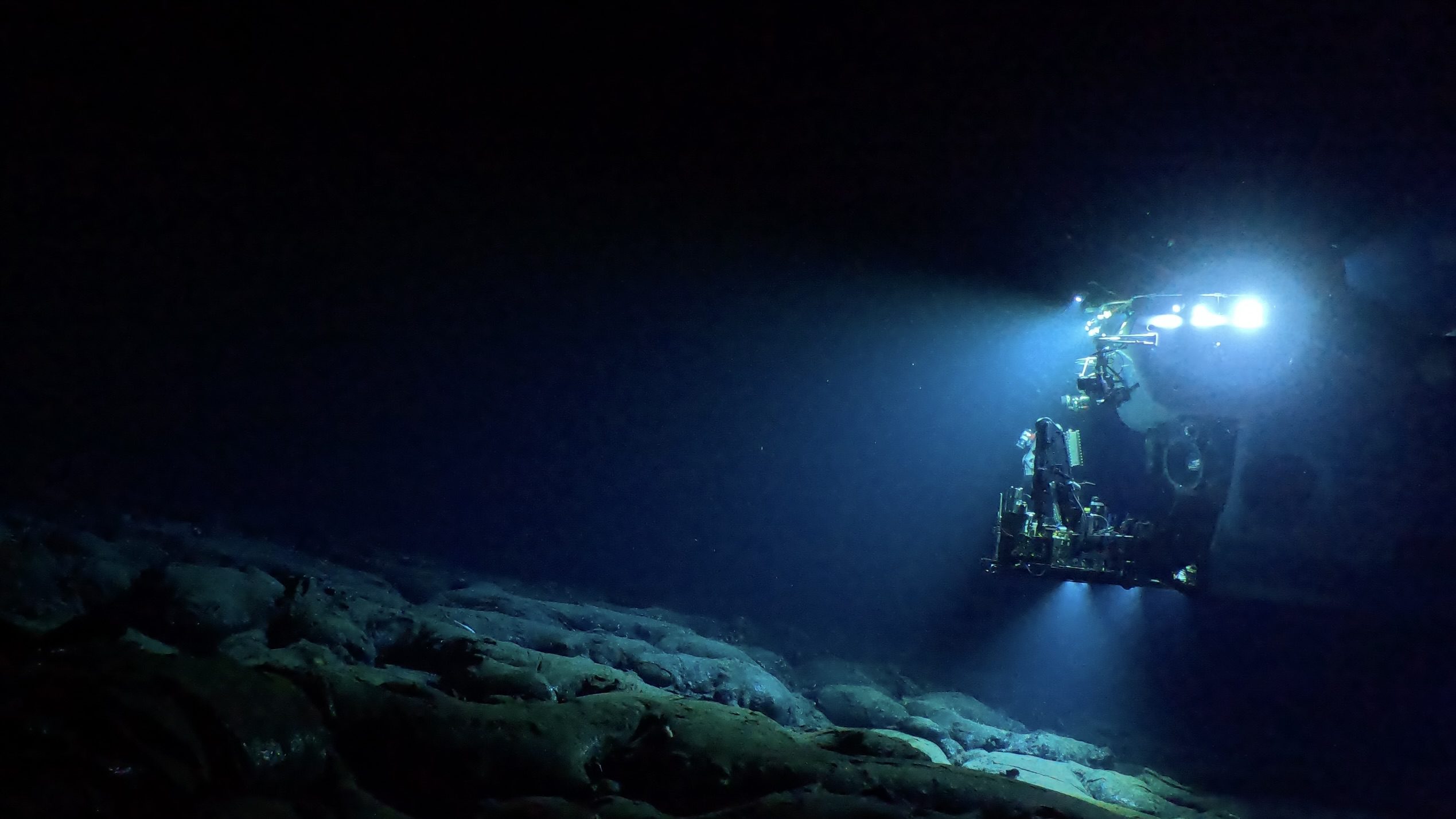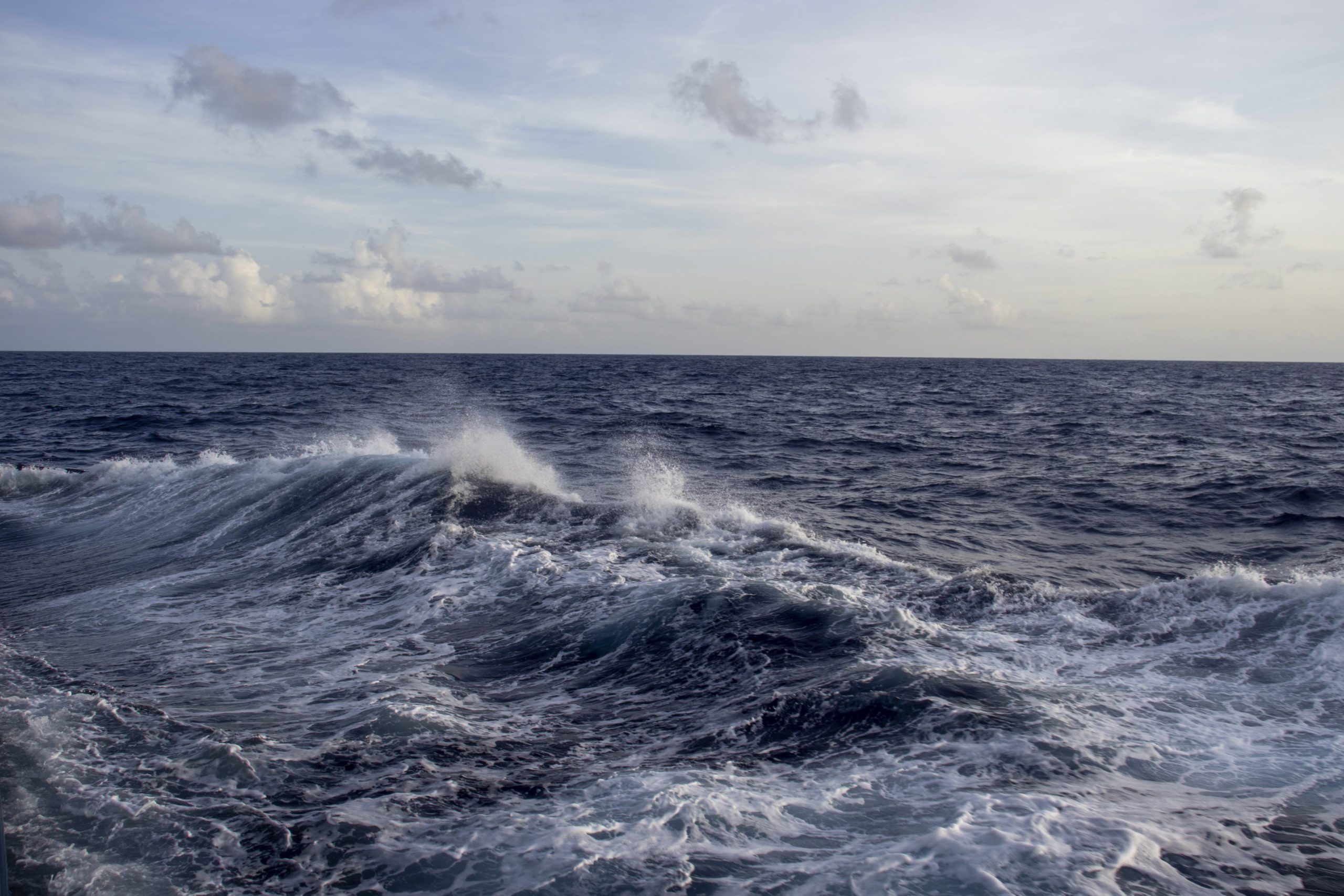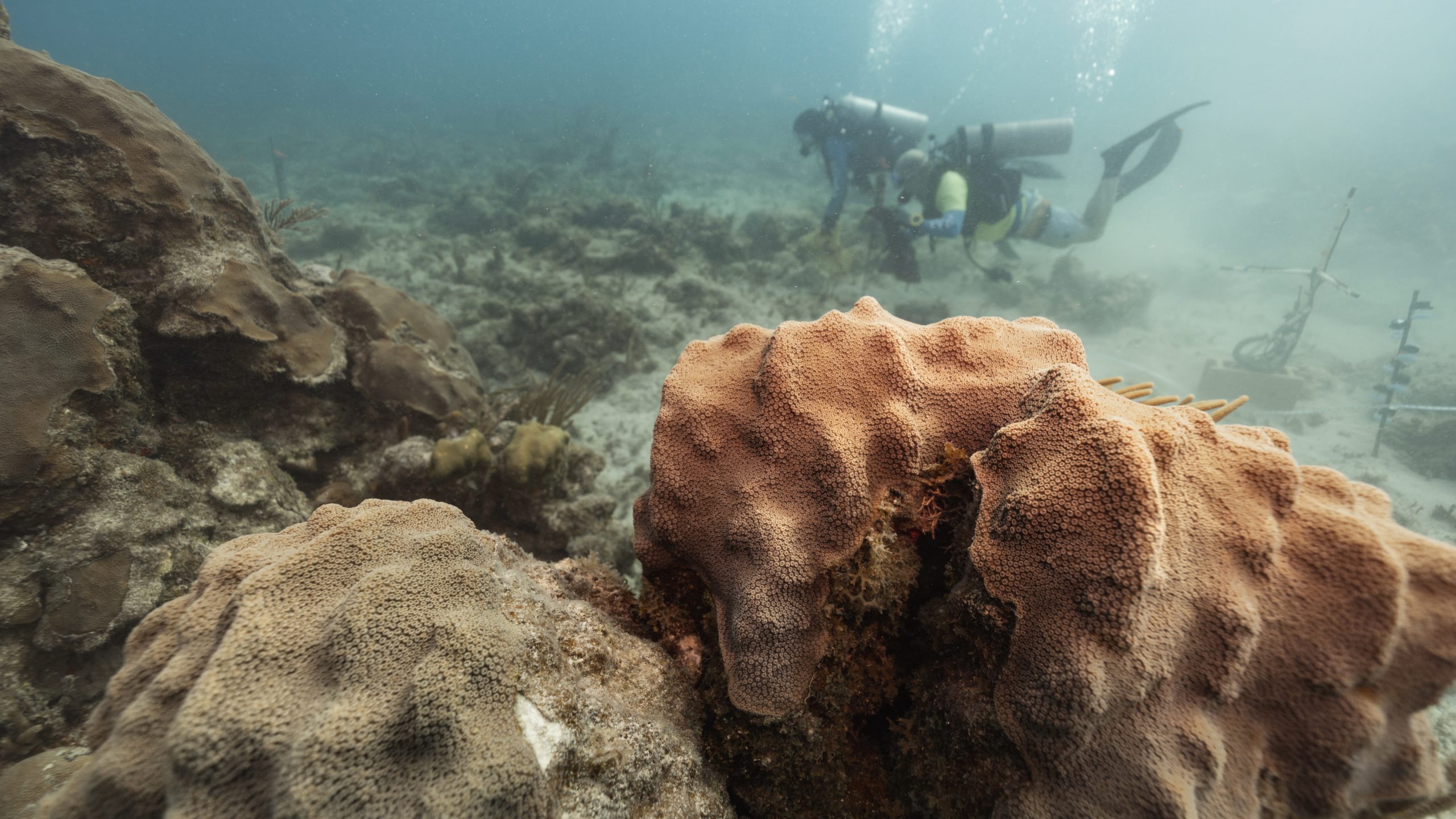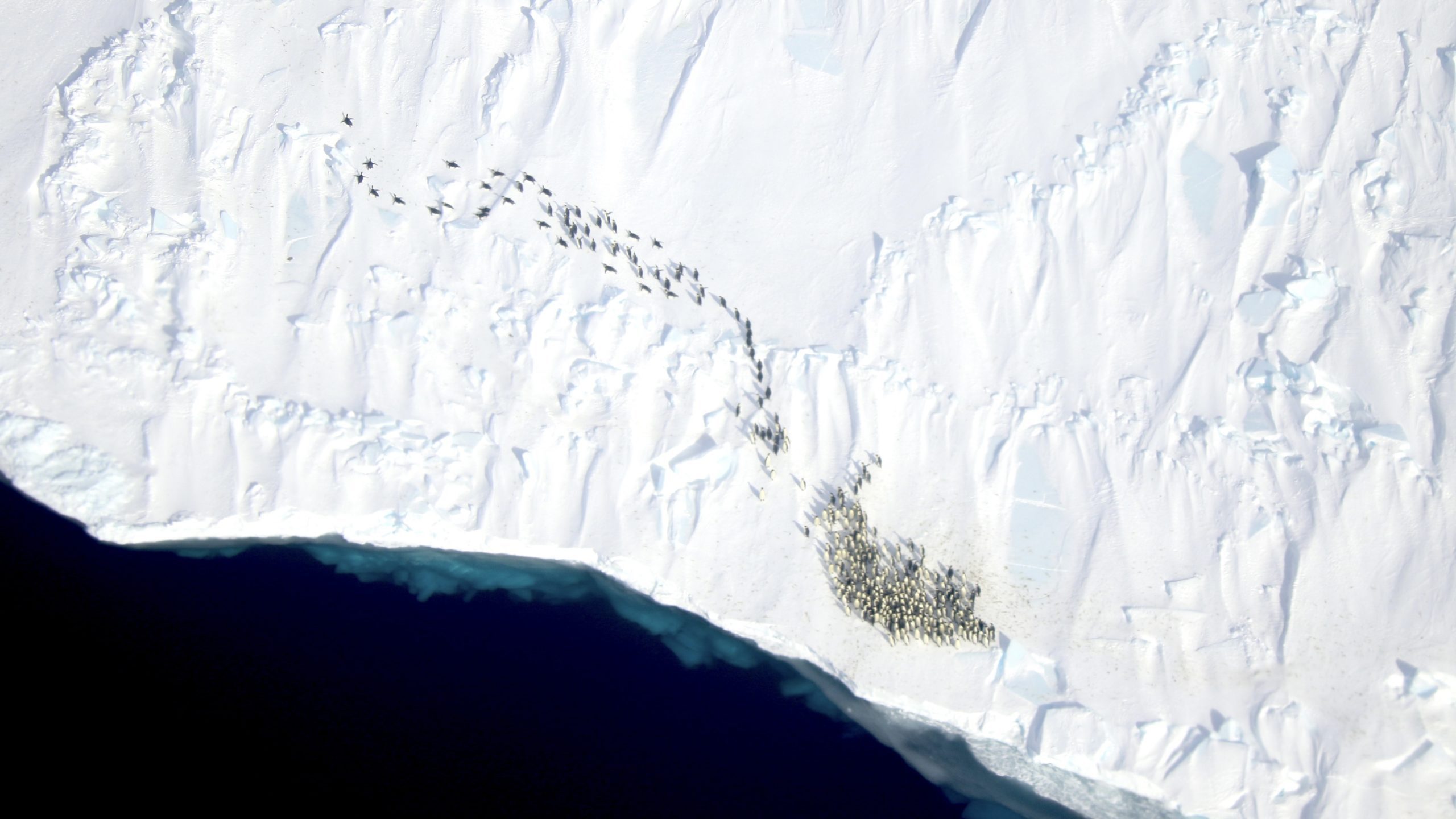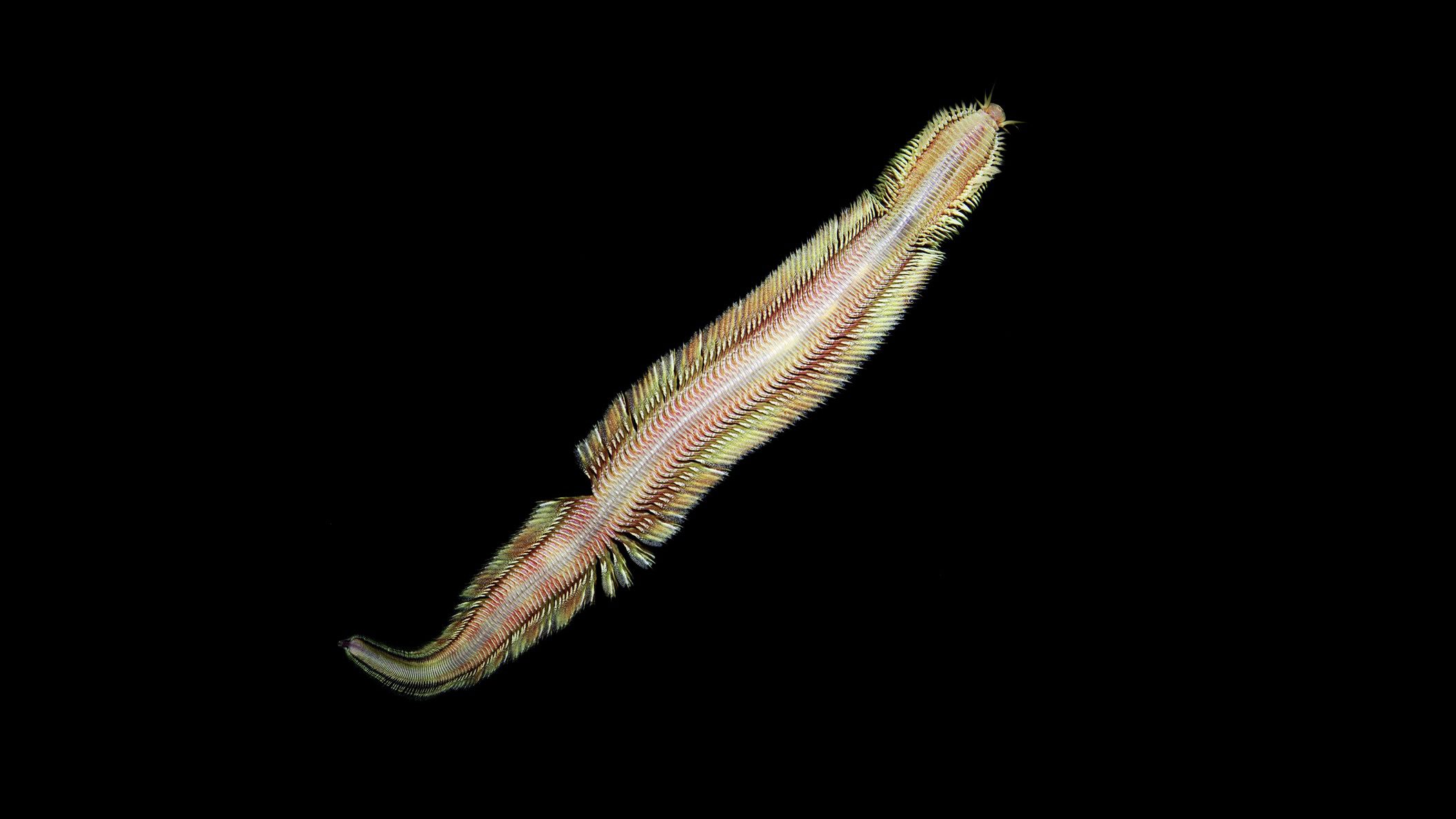News Releases
Warm water could persist within icy ocean worlds
A new study investigates how the influence of low gravity, as found on ocean worlds in our solar system, impacts flow of water and heat below their seafloors.
Read MoreWave activity on Saturn’s largest moon
MIT, Woods Hole Oceanographic Institution researchers find wave activity on Saturn’s largest moon may be strong enough to erode the coastlines of lakes and seas.
Read MoreWHOI Scientists ‘read’ the messages in chemical clues left by coral reef inhabitants
What species live in this coral reef, and are they healthy? Chemical clues emitted by marine organisms might hold that information
Read MoreWHOI to Receive Funding For Ocean Margins Initiative in West Africa
New program at Schmidt Sciences will refine details of ocean carbon cycling and ecosystem resilience
Read MoreSixty Years of Deep Ocean Research, Exploration, and Discovery with Human-Occupied Vehicle Alvin
In June 1964, the world’s first deep-diving submersible dedicated to scientific research was commissioned. What have we learned over the past 60 years?
Read MoreWoods Hole Oceanographic Institution and Cape Cod Children’s Museum partner for World Ocean Day celebration
The Cape Cod Children’s Museum (CCCM) is proud to announce that its Exploring Cape Cod Waters exhibit is now fully complete.
Read MoreResearchers improve satellite surveillance of emperor penguins
New method will provide accurate counts and breeding success of the threatened species in the light of climate change
Read MoreWoods Hole Oceanographic Institution Marine Chemist Authors ‘A Kids Book About Being a Scientist’
In his new book, A Kids Book About Being a Scientist, award-winning author and WHOI chemist Chris Reddy encourages young people to explore the world around them
Read MoreNew Technologies Revise Scientists’ Understanding of the Oxygen Minimum Zone
A new technology detects trace amounts of oxygen in an environment where previously these life-supporting molecules were below the limit of detection.
Read MoreSpring 2024: Woods Hole Oceanographic Institution Elects New Trustees and Corporation Members
At Woods Hole Oceanographic Institution’s (WHOI’s) Spring Joint Meeting of the Board and Corporation today, Institution leaders elected three new Trustees and seven new Corporation Members.
Read MorePerkins School for the Blind Visit Woods Hole Oceanographic Institution
On Saturday, May 11, WHOI welcomed students from Perkins School for the Blind’s Outreach Program.
Read MoreWoods Hole Oceanographic Institution takes home four Communicator Awards
The Communicator Awards recognizes organizations committed to excellence, effectiveness, and innovation across all areas of communication.
Read MoreFor microscopic organisms, ocean currents act as ‘expressway’ to deeper depths, study finds
New research shows how tiny plant-like organisms hitch a ride on ocean currents to reach darker and deeper depths, where they impact carbon cycling and microbial dynamics in the subtropical oceans.
Read MoreHuman Activity Is Causing Toxic Thallium to Enter the Baltic Sea, According to New Study
Human activities account for a substantial amount – anywhere from 20% to more than 60% – of toxic thallium that has entered the Baltic Sea over the past 80 years, according to new research by scientists affiliated with WHOI and other institutions.
Read MoreWHOI Physical Oceanographer publishes peer-reviewed book about the Indian Ocean
The Indian Ocean and Its Role in the Global Climate System takes a deep dive into warming trends and extreme weather events
Read MoreWoods Hole Center for Oceans and Human Health Receives Additional Five Years of Funding
The National Institute of Environmental Health Sciences (NIEHS) and National Science Foundation (NSF) have announced that the Woods Hole Oceanographic Institution (WHOI) will receive funding to continue operating the Woods Hole Center for Oceans and Human Health (WHCOHH).
Read MoreA new tagging method for fragile marine species
Newly developed bioadhesive sensors (BIMS) are effective and less invasive than traditional tagging. Scientists can attach them with a thin layer of dried-hydrogel in less than 20 seconds.
Read MoreStudy: eDNA methods give a real-time look at coral reef health
Researchers from WHOI studied the microbes in coral reef water by examining eight reefs in the U.S. Virgin Islands over a period of seven years, which included periods of hurricane and coral disease disturbance.
Read MoreWoods Hole Oceanographic Institution nominated for two Webby Awards
Woods Hole Oceanographic Institution (WHOI) has been nominated for two Webby Awards for its work in sharing mostly never-before-seen footage of the wreckage of the RMS Titanic.
Read MoreFive new hydrothermal vents discovered in the eastern tropical Pacific Ocean
Ocean scientists discovered the new deep-sea hydrothermal vent sites on the seafloor at 2,550 meters (8366 feet, or 1.6 miles) depth.
Read MoreSea Surface Temperature Research Provides Clear Evidence of Human-Caused Climate Change
New oceanic research provides clear evidence of a human “fingerprint” on climate change and shows that specific signals from human activities have altered the seasonal cycle amplitude of sea surface temperatures.
Read MoreSonic Youth: Healthy Reef Sounds Increase Coral Settlement
Researchers at WHOI demonstrated that replaying healthy reef sounds could potentially be used to encourage coral larvae to recolonize damaged or degraded reefs.
Read MoreHigh Resolution Imagery Advances the Ability to Monitor Decadal Changes in Emperor Penguin Populations
High resolution satellite imagery and field-based validation surveys have provided the first multi-year time series documenting emperor penguin populations.
Read MoreNew Deep-Sea Worm Discovered at Methane Seep Off Costa Rica Named after Alvin Pilot Bruce Strickrott
The creature raises the number of new species found by scientists studying these seemingly inhospitable ecosystems to 48 Woods Hole, Mass. — Woods Hole Oceanographic Institution (WHOI), along with…
Read More
